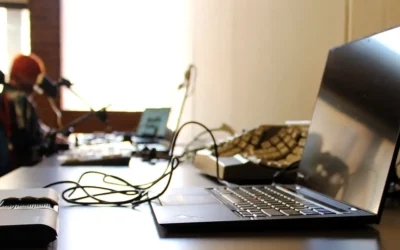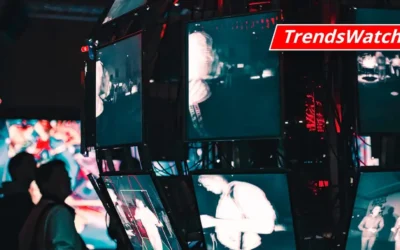Ray Harryhausen | Titan of Cinema: The Translation from Physical to Virtual

Rachael Cristine Woody
Last week I introduced the National Galleries Scotland (NGS) Ray Harryhausen | Titan of Cinema Virtual Exhibition Experience. This week we’ll analyze the NGS translation of the exhibit from physical to virtual. We’ll review how it was setup, how digital played a role, and lessons we can learn from their pivot to a virtual exhibition.
But First, Virtual Exhibitions Need a “Place”
Before we get into the specifics of how to translate a physical exhibition to virtual, we do need to address a foundational requirement: museums need a place to host the virtual exhibit. When thinking about producing a virtual exhibition it’s important to note that access to an online platform is needed. For museums that may not have a great online exhibit platform (or maybe none at all!) there are options. Please check out these two webinars I recently produced that discuss how to craft a discoverable collection and how to “hack” existing free to low cost options to achieve your goals: The Essentials for a Discoverable Digital Collection and The CMS: What’s Essential, What’s Hackable, and What Does it Cost?.
Choose Your Adventure
To begin, the virtual exhibition is divided into five main sections that you can choose from. As a reminder, those five sections are:
- King Kong and the Early Years
- Bringing Imagination to Life
- Dynamation: Making Movie Miracles
- Creatures of Legend
- A Life in Objects
Once you click on the tile for that section, you’re taken to a webpage that contains a variety of content for that exhibit section.
Setting the Scene
Each section of the virtual exhibit offers a video to set the tone. Clips of Harryhausen’s work, interviews with filmmakers, and other insights are provided in these short features. As you scroll down the webpage you can “walk” through the section and pause to read the text or engage with the content. There are several carousels that contain behind-the-scenes movie photos, drawings, models, movie posters, film footage, and other archival materials from the Harryhausen collection. As you click into each image you can view basic item information from the catalog—similar to how one would read the exhibit labels at a museum.
Digitization Played a Starring Role
Another foundational requirement of virtual exhibitions is possessing digital surrogates of the exhibit components. One can infer that much of the Harryhausen material was digitized for inclusion in the physical exhibit and for Vanessa Harryhausen’s Book Titan of Cinema; a book created in coordination with the NGS exhibition. Given that many museum objects are already in a Collections Management System (CMS) and have press or publication pictures taken, it can be very easy for museums to include digital material regardless of whether they’re producing a physical or virtual exhibit. The main point here is to consider where digital surrogates may already exist and what content has already been created, and how the museum staff can leverage those assets.
Lesson to Learn from NGS
- The physical can and should be translated to virtual.
- In a virtual space there’s more “room” to display and remix museum objects with archival items.
- Leverage digital surrogates and other already created assets that can easily be incorporated.
- Be thoughtful in how items are presented, take care to explain why the items were included, and make connections between items obvious.
- Use an engaging format like video to help introduce each section, highlight some of the exhibit content, and imbue meaning into the exhibition space.
Conclusion
The translation from physical to virtual is possible but it takes the right tools and a thoughtful approach in order to execute it effectively. The NGS Harryhausen exhibition is a great entry into translating exhibitions from physical to virtual. There’s so much potential for virtual exhibits (even beyond our current period of quarantine) and it’s important for us to take note of these translation experiments and learn from them.

Rachael Cristine Woody
Expert, consultant and blogger Rachael Cristine Woody advises on museum strategies, collections management, digital museums, and grant writing for a wide variety of clients. She is a popular presenter and Lucidea Press author. For more on museum success, learn about Lucidea’s Argus Museum CMS for virtual, multimedia presentation of collections, visitor engagement, and museum staff productivity and impact.
Similar Posts
Museum Collections Online with Accessibility Principle 2: Operable
Compliance with WCAG Version 2.1 Principle 2: Operable
Museum Collections Online with Accessibility Principle 1: Perceivable
Compliance with WCAG Version 2.1 Principle 1: Perceivable, affecting information published from museum CMS to an online portal; expert guidance
Accessibility Standards for Museum Collections Online
A museum’s compliance with the ADA Title II 2024 update has benefits for its online content and for the museum’s community of users.
Museum TrendsWatch 2024: Digital Twins and Doom Loops & Combatting the Loneliness Crisis
Digital Twins is the construction of a digital surrogate for a person, place, or thing—one of several new concepts and trends in the museum sector.




Leave a Comment
Comments are reviewed and must adhere to our comments policy.
0 Comments